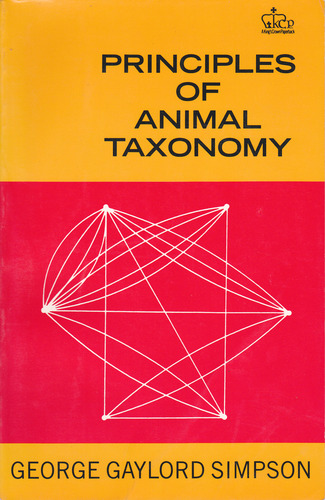Principles of animal taxonomy pdf
Par brewster noel le jeudi, septembre 29 2016, 07:18 - Lien permanent
Principles of animal taxonomy. George Gaylord Simpson

Principles.of.animal.taxonomy.pdf
ISBN: 023109650X,9780231096508 | 131 pages | 4 Mb

Principles of animal taxonomy George Gaylord Simpson
Publisher: Columbia University Press
Scientifically, it is called taxonomy and rooted in ancient Greek. According to Simpson (“Principles of animal taxonomy”), a taxonomy is a “classification, including bases, principles, procedures and rules”. New York: Columbia University Press. The first significant definitions were developed by Aristotle. Comparison of exotic horn types The heroic age of biological taxonomy is long over, but anatomy as an explanatory principle is still able to take over with a special convincing force any wonderful being from the world of legends to our one. The following is a brief summary on the principles and advancements of primary genetic markers involved in assessments of Animal Genetic Resources (AnGR). Biological Classification of Organisms. He studied botany and medicine and Of his higher groupings, only those for animals are still in use, and the groupings themselves have been significantly changed since their conception, as have the principles behind them. Scarcely a decade ago, Simpson (1961) matter-of-factly concluded that for the protists "evolutionary classification is not yet practicable. Introduction Biology as a science, put the various organisms as its object of study. Each recently discovered new animal or prodigious being became understandable and inserted in the common system for once as soon as its anatomy was described and, first of all, depicted. Conversely, protein electrophoresis is a rapid, economic, and straightforward technique and provides a more detailed representation of polymorphisms than morphological or cytological markers; thus, it is still widely used in elucidating the origin and classification of species [10]. Linnaeus, Carolus (kärō'ləs lĭnā'əs), 1707-78, Swedish botanist and taxonomist, considered the founder of the binomial system of nomenclature and the originator of modern scientific classification of plants and animals.